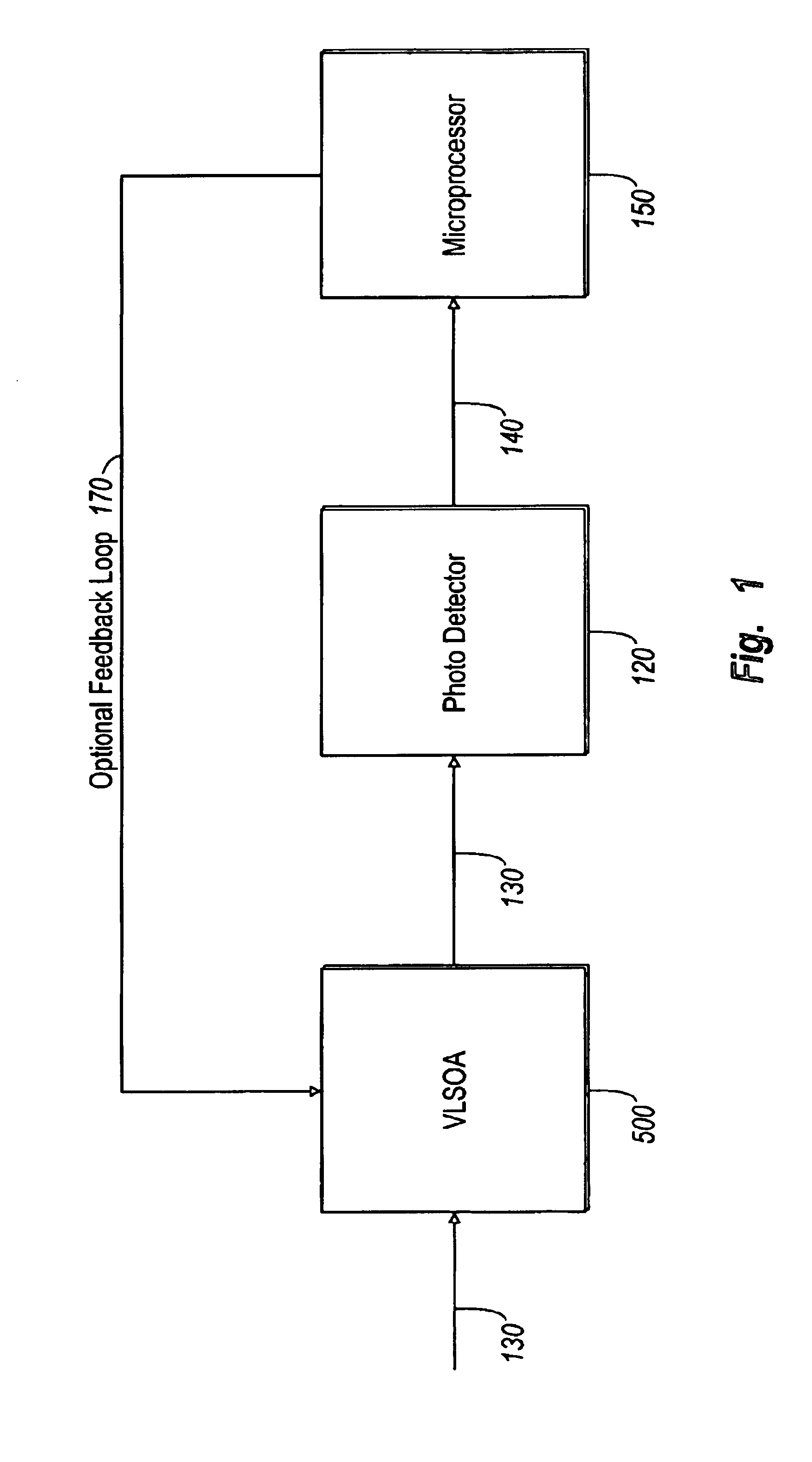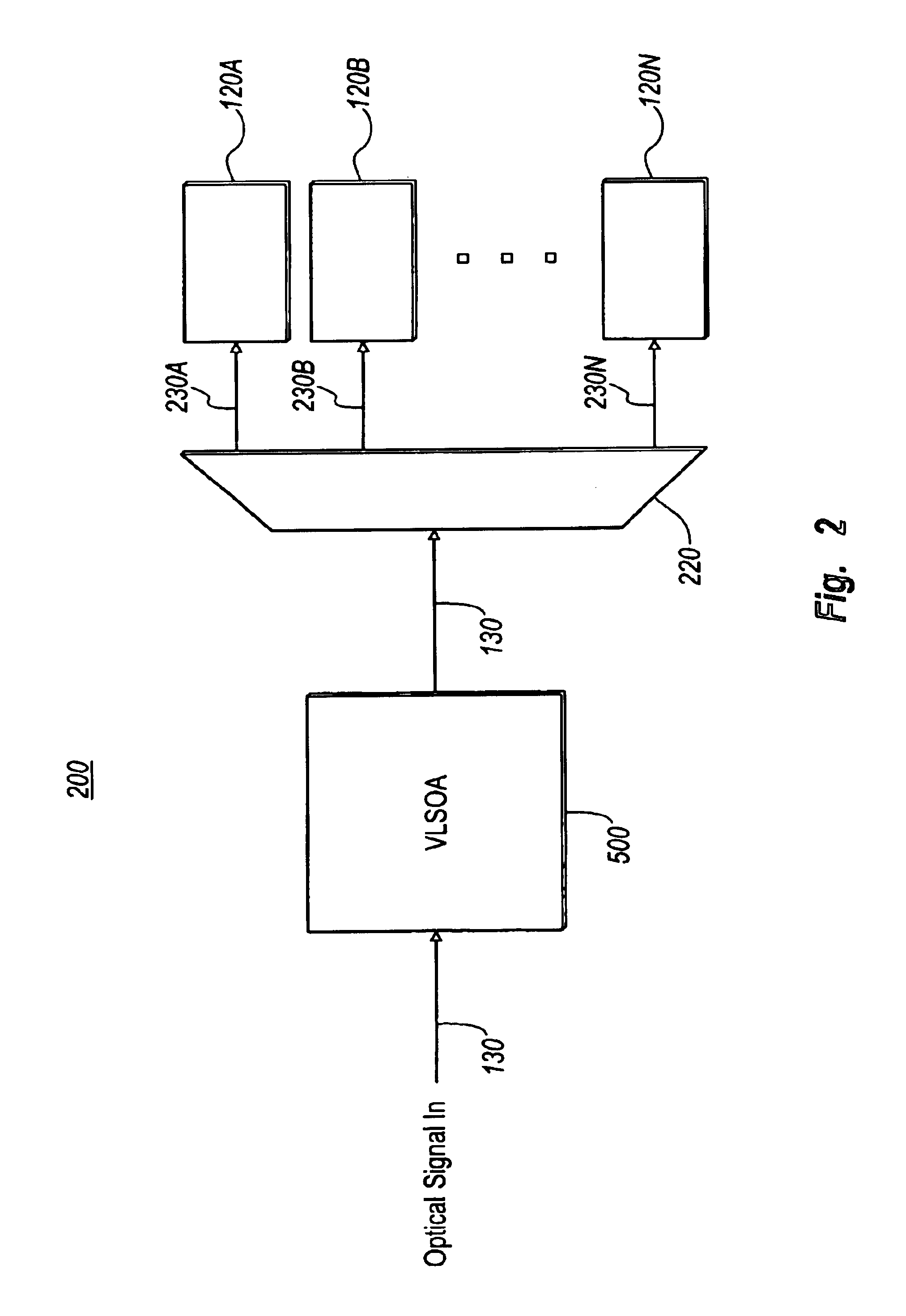Optical receiver including a linear semiconductor optical amplifier
a technology of optical amplifier and linear semiconductor, which is applied in the structure of semiconductor amplifier, semiconductor laser, electromagnetic transmission, etc., can solve the problems of high gain electronic amplifier capable of operating at these higher data rates, difficult to produce high sensitivity, and typically only operating over a narrow wavelength, so as to reduce the requirements and cost of electronic receiver circuitry, improve the linear gain characteristics of the vlsoa, and improve the sensitivity of the receiver
- Summary
- Abstract
- Description
- Claims
- Application Information
AI Technical Summary
Benefits of technology
Problems solved by technology
Method used
Image
Examples
Embodiment Construction
[0027]FIGS. 1 and 2 are block diagrams of example optical receivers in which a VLSOA is coupled to a photodetector, either directly or indirectly. Each of FIGS. 1 and 2 depicts a VLSOA in combination with some other optical element. In some embodiments, these combinations are implemented as combinations of discrete devices, which may be also packaged separately or which may be combined into a single package. For example, in one embodiment of FIG. 1, the VLSOA 500 and photodetector 120 are separate discrete devices, and they are coupled together by optical fibers 130. In a preferred embodiment, the combinations shown in FIGS. 1 and 2 are implemented as integrated optics, in which multiple optical elements are integrated onto a common substrate. Applying this approach to FIG. 1, the VLSOA 500 and photodetector 120 are integrated onto a common substrate to make a single chip transmitter. The integrated and discrete approaches may be combined to form hybrid versions. For example, in FIG...
PUM
 Login to View More
Login to View More Abstract
Description
Claims
Application Information
 Login to View More
Login to View More - R&D
- Intellectual Property
- Life Sciences
- Materials
- Tech Scout
- Unparalleled Data Quality
- Higher Quality Content
- 60% Fewer Hallucinations
Browse by: Latest US Patents, China's latest patents, Technical Efficacy Thesaurus, Application Domain, Technology Topic, Popular Technical Reports.
© 2025 PatSnap. All rights reserved.Legal|Privacy policy|Modern Slavery Act Transparency Statement|Sitemap|About US| Contact US: help@patsnap.com



